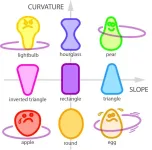(Press-News.org) A new international study led by researchers at Karolinska Institutet in Sweden shows that AI-based models can outperform human experts at identifying ovarian cancer in ultrasound images. The study is published in Nature Medicine.
“Ovarian tumours are common and are often detected by chance,” says Professor Elisabeth Epstein at the Department of Clinical Science and Education, Södersjukhuset (Stockholm South General Hospital), at Karolinska Institutet and senior consultant at the hospital’s Department of Obstetrics and Gynecology. “There is a serious shortage of ultrasound experts in many parts of the world, which has raised concerns of unnecessary interventions and delayed cancer diagnoses. We therefor wanted to find out if AI can complement human experts.”
AI outperforms experts
The researchers have developed and validated neural network models able to differentiate between benign and malignant ovarian lesions, having trained and tested the AI on over 17,000 ultrasound images from 3,652 patients across 20 hospitals in eight countries. They then compared the models’ diagnostic capacity with a large group of experts and less experienced ultrasound examiners.
The results showed that the AI models outperformed both expert and non-expert examiners at identifying ovarian cancer, achieving an accuracy rate of 86.3 per cent, compared to 82.6 per cent and 77.7 per cent for the expert and non-expert examiners respectively.
“This suggests that neural network models can offer valuable support in the diagnosis of ovarian cancer, especially in difficult-to-diagnose cases and in settings where there’s a shortage of ultrasound experts,” says Professor Epstein.
Reducing the need for expert referrals
The AI models can also reduce the need for expert referrals. In a simulated triage situation, the AI support cut the number of referrals by 63 per cent and the misdiagnosis rate by 18 per cent. This can lead to faster and more cost-effective care for patients with ovarian lesions.
Despite the promising results, the researchers stress that further studies are needed before the full potential of the neural network models and their clinical limitations are fully understood.
“With continued research and development, AI-based tools can be an integral part of tomorrow’s healthcare, relieving experts and optimising hospital resources, but we need to make sure that they can be adapted to different clinical environments and patient groups,” says Filip Christiansen, doctoral student in Professor Epstein’s research group at Karolinska Institutet and joint first author with Emir Konuk at the KTH Royal Institute of Technology.
Evaluating the safety of the AI support
The researchers are now conducting prospective clinical studies at Södersjukhuset to evaluate the everyday clinical safety and usefulness of the AI tool. Future research will also include a randomised multicentre study to examine its effect on patient management and healthcare costs.
The study was conducted in close collaboration with researchers at the KTH Royal Institute of Technology and was financed by grants from the Swedish Research Council, the Swedish Cancer Society, the Stockholm Regional Council, the Cancer Research Funds of Radiumhemmet and the Wallenberg AI, Autonomous Systems and Software Program (WASP).
Elisabeth Epstein, Filip Christiansen and three co-authors have applied for a patent through the company Intelligyn for methods of computer-supported diagnostics. Elisabeth Epstein, Filip Christiansen and Kevin Smith, researcher at the KTH Royal Institute of Technology, also own shares in Intelligyn, for which Professor Epstein is an unsalaried manager. See the paper for a full list of conflicts of interest.
Publication: ”International multicenter validation of AI-driven ultrasound detection of ovarian cancer”, Filip Christiansen, Emir Konuk, Adithya Raju Ganeshan, Robert Welch, Joana Palés Huix, Artur Czekierdowski, Francesco Paolo Giuseppe Leone, Lucia Anna Haak, Robert Fruscio, Adrius Gaurilcikas, Dorella Franchi, Daniela Fischerova, Elisa Mor, Luca Savelli, Maria Àngela Pascual, Marek Jerzy Kudla, Stefano Guerriero, Francesca Buonomo, Karina Liuba, Nina Montik, Juan Luis Alcázar, Ekaterini Domali, Nelinda Catherine P. Pangilinan, Chiara Carella, Maria Munaretto, Petra Saskova, Debora Verri, Chiara Visenzi, Pawel Herman, Kevin Smith & Elisabeth Epstein, Nature Medicine, online 2 January 2025, doi: 10.1038/s41591-024-03329-4.
END
AI can improve ovarian cancer diagnoses
2025-01-02
ELSE PRESS RELEASES FROM THIS DATE:
Zebrafish protein unlocks dormant genes for heart repair
2025-01-02
Researchers from the Bakkers group at the Hubrecht Institute have successfully repaired damaged mouse hearts using a protein from zebrafish. They discovered that the protein Hmga1 plays a key role in heart regeneration in zebrafish. In mice, this protein was able to restore the heart by activating dormant repair genes without causing side effects, such as heart enlargement. This study, supported by the Dutch Heart Foundation and Hartekind Foundation, marks an important step toward regenerative therapies to prevent heart failure. The findings were published in Nature Cardiovascular Research on January 2, 2025.
After a heart attack, the human heart loses millions of muscle cells that cannot ...
How good are AI doctors at medical conversations?
2025-01-02
Artificial intelligence tools such as ChatGPT have been touted for their promise to alleviate clinician workload by triaging patients, taking medical histories and even providing preliminary diagnoses.
These tools, known as large-language models, are already being used by patients to make sense of their symptoms and medical tests results.
But while these AI models perform impressively on standardized medical tests, how well do they fare in situations that more closely mimic the real world?
Not that great, according to the findings of a new study led by researchers at Harvard Medical School and Stanford University.
For their analysis, published Jan. 2 in Nature ...
A speckle of hope for cancer patients
2025-01-02
Fighting cancer can seem like a deadly game of chance. While some patients may respond well to certain treatments, others might not be as fortunate. Doctors and scientists have long struggled to explain why. Now, Cold Spring Harbor Laboratory (CSHL) Assistant Professor Katherine Alexander and University of Pennsylvania Professor Shelley Berger have found a possible source of this variability in clear cell renal cell carcinoma (ccRCC)—the most common kidney cancer diagnosed in adults.
Alexander ...
How does a hula hoop master gravity? Mathematicians prove that shape matters
2025-01-02
Hula hooping is so commonplace that we may overlook some interesting questions it raises: “What keeps a hula hoop up against gravity?” and “Are some body types better for hula hooping than others?” A team of mathematicians explored and answered these questions with findings that also point to new ways to better harness energy and improve robotic positioners.
The results are the first to explain the physics and mathematics of hula hooping.
“We were specifically interested in what kinds of body motions and shapes could successfully hold the hoop up and what physical requirements and restrictions are involved,” explains ...
New method to measure 5G radiation from mobile phones and base stations
2025-01-02
A team of researchers from Project GOLIAT has developed and applied a new protocol to measure exposure to mobile phone radiation, in particular from 5G. The researchers measured radiofrequency electromagnetic field (RF-EMF) levels during three different scenarios: when the mobile device is in flight mode (non-user), when the mobile phone is used intensively by either downloading or uploading data. The study demonstrates that e.
The research was conducted in Switzerland, one of the first countries in Europe to roll out 5G networks on a large scale. The results have now been published in Environmental Research and provide relevant data for epidemiological ...
Artificial Intelligence Predicts Deutsche eMark (DEM) as the 2025 Crypto Sensation
2025-01-01
What Is Deutsche eMark (DEM)?
Deutsche eMark, often referred to by its abbreviation DEM, is a cryptocurrency that draws inspiration from reviving the legacy of the German Mark—Germany’s official currency before the introduction of the euro. The creators of DEM aimed to leverage the recognition of the traditional German currency by combining it with innovative blockchain technology.
The primary mission of the project is to enable fast and efficient transactions both within Germany and on the international market. By using a peer-to-peer network, Deutsche eMark seeks to offer low transaction costs while maintaining a high level of security.
Deutsche eMark, often referred to by its abbreviation DEM, is a cryptocurrency that draws inspiration from reviving the legacy of the German Mark—Germany’s official currency before the introduction of the euro. The creators of DEM aimed to leverage the recognition of the traditional German currency by combining it with innovative blockchain technology.
The primary mission of the project is to enable fast and efficient transactions both within Germany and on the international market. By using a peer-to-peer network, Deutsche eMark seeks to offer low transaction costs while maintaining a high level of security.
Revolutionizing heat management with high-performance cerium oxide thermal switches
2025-01-01
Groundbreaking cerium oxide-based thermal switches achieve remarkable performance, transforming heat flow control with sustainable and efficient technology.
Thermal switches, which electrically control heat transfer, are essential for the advancement of sophisticated thermal management systems. Historically, electrochemical thermal switches have been constrained by suboptimal performance, which impedes their extensive utilization in the electronics, energy, and waste heat recovery sectors.
A research team led by Professor Hiromichi Ohta of the Research Institute for Electronic Science, Hokkaido University employed a novel approach of ...
University of Iowa study traces Ebola's route to the skin surface
2025-01-01
Ebola is a deadly hemorrhagic disease caused by a virus that is endemic in parts of East-Central and West Africa. Most people are aware that a primary route for person-to-person transmission is through contact with bodily fluids from an infected person. But more recent outbreaks, including the 2013-2016 Ebola epidemic in West Africa, demonstrated that infectious Ebola virus (EBOV) is also found on the skin’s surface of those who have succumbed to infection or at late times during infection. Although evidence suggests that EBOV can be passed on from skin contact with a person in the later stages of the disease, very little is known about how the virus makes its way out ...
Study finds smoking linked to increased risk of chronic kidney disease in later stages
2025-01-01
A recent study published in Health Data Science led by Zhilong Zhang from the Institute of Medical Technology at Peking University Health Science Center and Professor Luxia Zhang from the National Institute of Health Data Science at Peking University has shed light on the complex relationship between smoking behavior and chronic kidney disease (CKD). Using data from over 500,000 participants in the UK Biobank cohort, the researchers conducted both traditional observational studies and advanced Mendelian randomization (MR) analyses to explore whether smoking behavior ...
System to auto-detect new variants will inform better response to future infectious disease outbreaks
2025-01-01
Researchers have come up with a new way to identify more infectious variants of viruses or bacteria that start spreading in humans - including those causing flu, COVID, whooping cough and tuberculosis.
The new approach uses samples from infected humans to allow real-time monitoring of pathogens circulating in human populations, and enable vaccine-evading bugs to be quickly and automatically identified. This could inform the development of vaccines that are more effective in preventing disease.
The approach can also quickly detect ...



